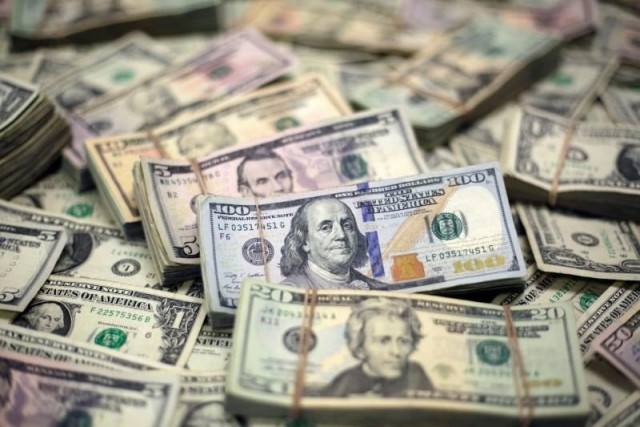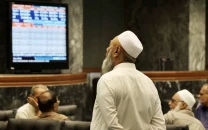With the end of PML-N's term, SBP's reserves stand at just $10.03b
In latest update, reserves slide 2.78% with reason being external debt and official payments

In latest update, reserves slide 2.78% with reason being external debt and official payments. PHOTO: REUTERS/Jose Luis Gonzalez/Illustration
With the PML-N's tenure ending today (Thursday, May 31), the country's foreign exchange reserves stand depleted, sparking concern over Pakistan's ability to meet future payment obligations and manage a bulging current account deficit.
On May 25, foreign currency reserves held by the central bank were recorded at $10,033.8 million, down $286.4 million or 2.78% compared with $10,320.2 million in the previous week.
The decline came in the wake of payments on account of external debt servicing and other official payments.
Foreign exchange: SBP's reserves plunge another 4.43%, now stand at $10.3b
Overall, liquid foreign reserves held by the country, including net reserves held by banks other than the SBP, stood at $16,406.8 million. Net reserves held by banks amounted to $6,373 million.
In April, SBP's reserves increased $593 million due to official inflows. Pakistan also raised $2.5 billion in November 2017 by floating dollar-denominated bonds in the international market in a bid to shore up official reserves.
A few months ago, foreign currency reserves surged due to official inflows including $622 million from the Asian Development Bank (ADB) and $106 million from the World Bank.
Earlier, the SBP received $350 million under the Coalition Support Fund (CSF). In January, the SBP made a $500-million loan repayment to the State Administration of Foreign Exchange (SAFE), China.
Foreign exchange: SBP's reserves plunge 3.26% to $10.8b
Trouble ahead?
Pakistan's reserves have plummeted over 43% from a record high of $18.14 billion at the end of June 2016, according to SBP data.
The reserves touched the peak after the country borrowed $6.2 billion from the International Monetary Fund (IMF) under the 36-month Extended Fund Facility that ended in September 2016.
Since then, the reserves have been on a steady decline as economic managers have largely failed to find new markets to increase exports and restrict growing imports, which was the largest source of shrinking foreign exchange reserves.
Pakistan's imports stood at $45.56 billion for first 10 months of the current fiscal year, which were more than double the value of exports that amounted to $20.55 billion.
The government let the rupee depreciate by around 9.5% in two rounds - 5% in December 2017 and 4.5% in March 2018 - in a bid to shore up reserves by encouraging exports and discouraging imports.
The move has helped a little bit in improving exports, but has failed to curb excessive imports and added to the country's already high external debt.
Experts believe that an increase in international crude oil prices will not bode well for Pakistan, which may be forced to go back to the IMF for a bailout package if reserves continue to slide.


















COMMENTS
Comments are moderated and generally will be posted if they are on-topic and not abusive.
For more information, please see our Comments FAQ